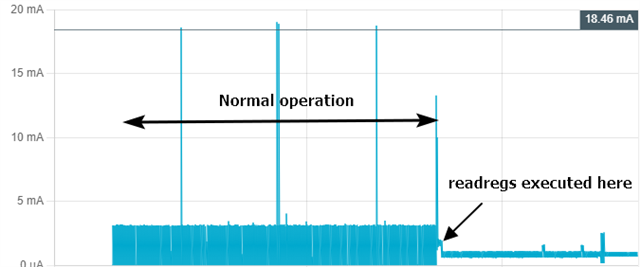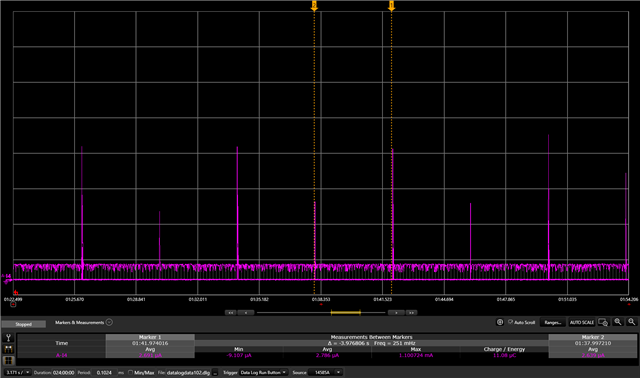Hi,
THIS IS AN URGENT REQUEST. PLEASE HELP ASAP.
After deploying our sensors based on nRF52840 running coap client on OpenThread and powered by 3V 2032 Lithium coin cell, we have noticed that two out of about 50 sensors just not sending data to the host. One of the sensors we know has hung up with no response to the button push and lo LED indication. The other have the characteristics of it, but not yet confirmed by the client. The issue is not immediate, some like couple weeks, some couple of days. We have seen two of our sensors, which are being tested in our lab, to hang up as well. We dont have an external watchdog. Not sure if the internal watchdog is enabled.
Once the sensor hangs up, you can make it come back alive by power cycling.
Now we have an external 32k oscillator in our design, which showed stopping after some time probably due to capacitor loading not being correct. So we revert to internal oscillator, which seem to solve the issue. That is how these sensors been working so far and release to customers. But the external oscillator and two loading caps exist in the PCB. I dont know if this can be an issue if we use HFINT internal oscillator.
We have enabled the internal oscillator by the following in the prj.conf.
CONFIG_CLOCK_CONTROL=y CONFIG_CLOCK_CONTROL_NRF_K32SRC_RC=y CONFIG_CLOCK_CONTROL_NRF_K32SRC_XTAL=n
We have not done any calibrations for the HFINT.
So these are my questions.
1. What possible causes could be there for the hang-up of nRF52840? As mentioned, it is powered by a 3V coin cell, which is not discharged and running off the internal HFINT oscillator.
2. Can the 32k external oscillator being present in the sensor affect the stability of HFINT oscillator?
3. Is the way in which we have enabled the internal oscillator good enough? Do we need to do any calibrations for it?
4. Can the internal WDT restart the HFINT oscillator, if it has stopped for whatever reason?
5. How to enable, load and hit the internal WDT from application FW?
Cheers,
Kaushalya




